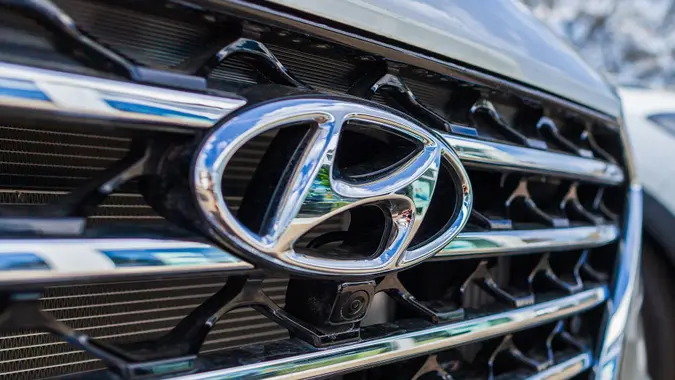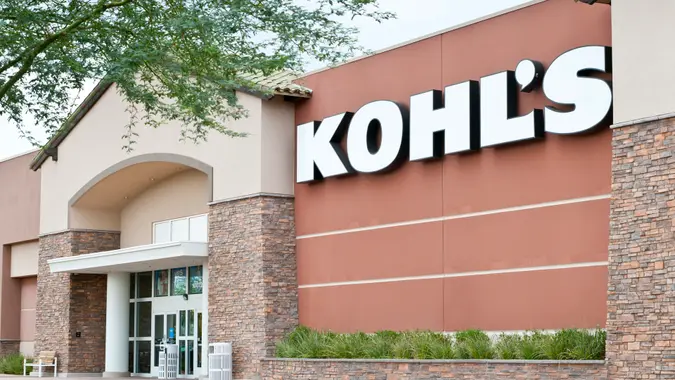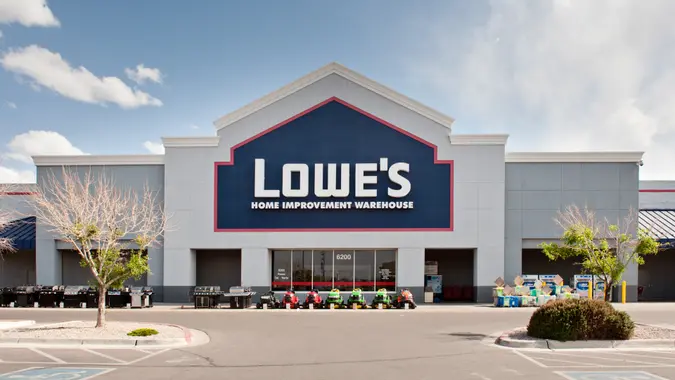4 Ways Retirees Are Wasting Thousands on Their Cars Each Year

Commitment to Our Readers
GOBankingRates' editorial team is committed to bringing you unbiased reviews and information. We use data-driven methodologies to evaluate financial products and services - our reviews and ratings are not influenced by advertisers. You can read more about our editorial guidelines and our products and services review methodology.

20 Years
Helping You Live Richer

Reviewed
by Experts

Trusted by
Millions of Readers
Retirement should free up money for the things you actually enjoy, but many retirees are throwing cash away on unnecessary car expenses. Auto expert Chris Pyle from JustAnswer has seen these costly mistakes over and over again.
“Retired people drive much less than people still working,” Pyle explained. “So their car does more sitting than driving, or the trips are much shorter and less frequent.”
If you want to save cold hard cash when it comes to your car, there are some ways you can do that. Here are the biggest money drains Pyle sees and how to fix them.
Getting Unnecessary Oil Changes
The Waste: Many retirees get their oil changed every three months regardless of mileage because they think oil “expires” after sitting too long.
What Pyle Said: “Engine oil has two life spans: miles and age. I am not a fan of believing oil expires in an engine due to age. I can imagine many older folks are being told it is time to change the oil because it is old, but there are not many miles on it.”
The Reality: If you’re driving 5,000 miles per year instead of 12,000, you don’t need oil changes four times annually. Modern oil can easily last six to 12 months for low-mileage drivers.
How To Fix It: Change oil based on miles driven, not arbitrary time intervals. If you’re only putting 3,000 miles on your car annually, two oil changes per year are probably sufficient.
Money Saved: Skipping two to three unnecessary oil changes annually at $50 to $80 each will save you $100 to $240 yearly.
Pyle did warn about one issue with infrequent driving: “Short trips cause the oil to be contaminated with condensation. One good way to fight that is to at least drive one trip every two weeks that is at least a continuous 30 minutes. This will really heat up the engine and oil to cook off the water.”
Buying Extended Warranties at Purchase
The Waste: Purchasing extended warranties when buying a new car, even though the manufacturer warranty already covers the first three to five years.
What Pyle Said: “Car repairs stink, especially when you have to pay for the tow, parts and labor. All too often, these warranties are purchased at the same time the car is purchased new. That means the first three to five years and first 36,000 to 60,000 miles were a waste because the manufacturer already warranties the car.”
The Smart Move: “If you feel the need, you can purchase an extended warranty right before your base warranty expires,” Pyle advised.
Money Saved: Avoid paying $1,500 to $3,000 for coverage you won’t use for years. If you decide you want extended coverage later, buy it when you actually need it.
Keeping Full Coverage Insurance
The Waste: Maintaining comprehensive collision coverage on older vehicles when the potential payout is less than what you’re paying in premiums.
What Pyle Said: “Often older retired people drive much more safely, because they travel more slowly and have less on their mind, and fewer distractions in the car. There can be savings by dropping collision coverage, but retaining liability (law) and comprehensive.”
The Math: If your car is worth $8,000 and collision coverage costs $600 annually, you’re paying 7.5% of the car’s value each year for coverage. After a few years, you’ll pay more in premiums than the car is worth.
The Strategy: Keep liability insurance (required by law) and comprehensive coverage for theft, vandalism and weather damage. Drop collision coverage on cars worth less than 10 times your annual premium.
Pyle noted that other coverages like uninsured motorist, towing and rental “are normally at cheap rates” and worth keeping for the protection they provide.
Money Saved: Dropping collision coverage can save $300 to $800 annually depending on your car and driving record.
Buying New Cars for Low-Mileage Driving
The Waste: Purchasing new vehicles that will be driven infrequently, taking massive depreciation hits on cars that barely get used.
What Pyle Said: “Cars are not investments. If you pay cash for a new car, you are wasting thousands on depreciation. If you finance it and carry the loan for the full term, the money lost is in the tens of thousands.” Instead, Pyle said: “Purchase a used car. There is no need to buy a new car that will be driven infrequently.”
The Better Approach: Buy a 2- to 3-year-old car with low mileage. Let someone else absorb the steepest depreciation while you get a nearly new vehicle at a significant discount.
Money Saved: Buying a 2-year-old car instead of new can save $8,000 to $15,000 upfront, plus lower insurance costs and registration fees.
What Smart Retirees Do Instead
Follow Pyle’s guidance and adjust your car-related spending to match your actual usage:
Maintenance: Base service intervals on miles driven, not calendar months. Track your actual mileage to determine appropriate service schedules.
Insurance: Review coverage annually and adjust based on your car’s current value and your driving patterns. Consider usage-based insurance programs that charge based on miles driven.
Purchasing: Buy used cars that are 2 to 4 years old with low mileage. Focus on reliability and comfort rather than having the latest features.
Extended Warranties: Only consider them when manufacturer coverage is about to expire and only on vehicles you plan to keep long term.
More From GOBankingRates
- Nearly 1 in 3 Americans Hit by a Costly Holiday Scam, Norton Survey Shows -- How To Avoid This
- Here's What Retirees Wasted the Most Money On in 2025 -- and How To Avoid It in 2026
- How Middle-Class Earners Are Quietly Becoming Millionaires -- and How You Can, Too
- 6 Safe Accounts Proven to Grow Your Money Up to 13x Faster
 Written by
Written by  Edited by
Edited by 

























